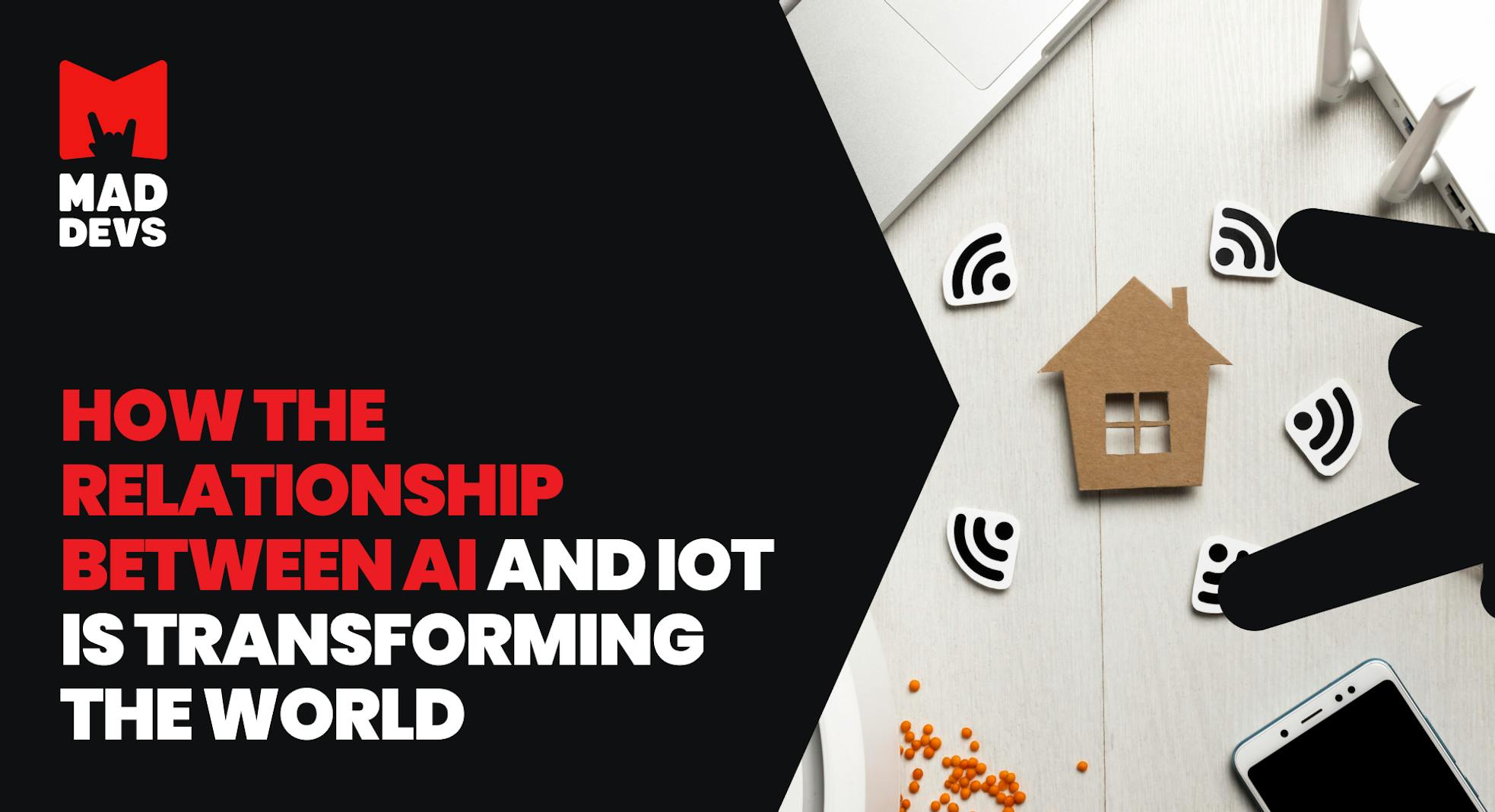The Artificial Intelligence of Things (AIoT) is a powerful combination of two of the most disruptive technologies of the 21st century: Artificial Intelligence (AI) and the Internet of Things (IoT). AI, with its ability to learn, reason, and adapt, has the potential to transform the way we live and work. IoT, with its network of interconnected devices and sensors, has already started to revolutionize industries from healthcare to agriculture. When AI is combined with IoT, it creates an even more potent force for innovation and change. In this article, we will provide an overview of AIoT, explore its potential applications and benefits, and discuss some challenges that must be addressed to achieve its full potential.
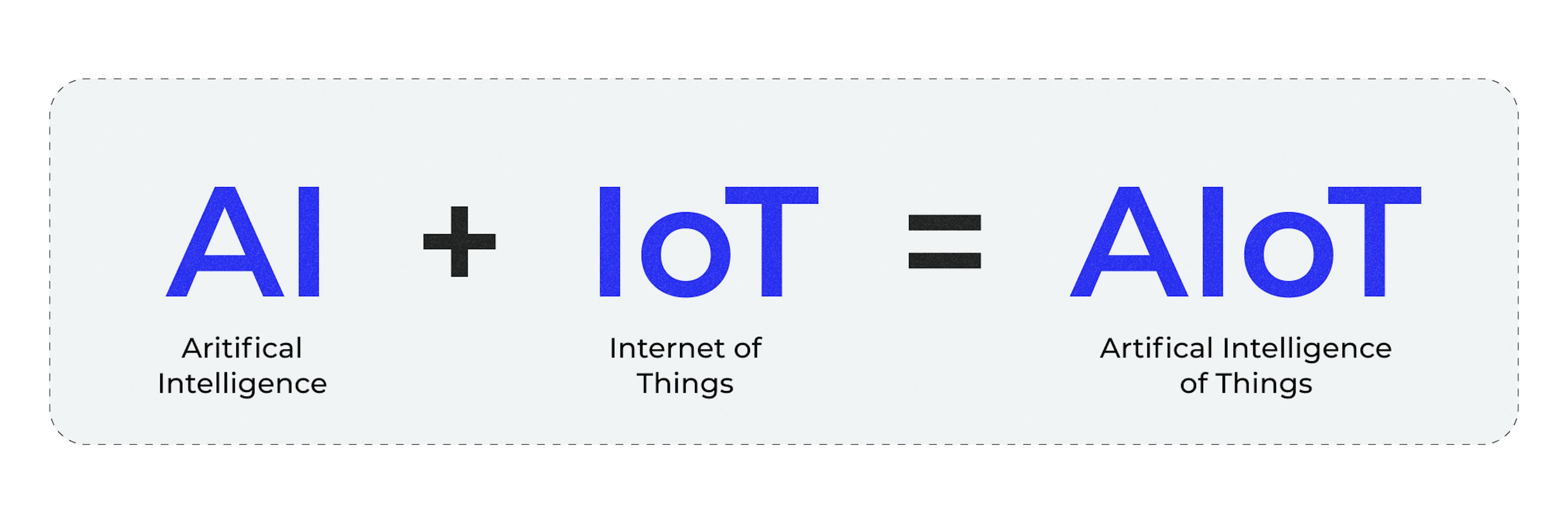
AI is a type of computer simulation that mimics the actions and behaviors of humans. The concept of the AIoT refers to the combination of the internet of things and artificial intelligence. Its goal is to improve the efficiency of the operations of the IoT by analyzing and managing data. It is commonly used in fields such as speech recognition and natural language processing.
Overview of the relationship between AI and IoT
AI and IoT are closely related because they work together to create more intelligent and connected systems. IoT devices generate data used to work with AI algorithms, which can then be used to make decisions and control IoT devices. It can be described as a feedback loop. The feedback loop can be used to continuously improve the performance of IoT devices and systems, making them more intelligent and adaptive over time. So it helps to create more intelligent and connected systems that can improve our lives and transform industries.
Explanation of how AI can enhance IoT devices and systems
First of all, let's elaborate on how AI can enhance the capabilities of IoT devices and systems. There is a number of ways:
- Predictive maintenance
IoT devices generate vast amounts of data, which can be analyzed by AI algorithms to identify patterns and predict when a device or system is likely to fail. By detecting problems before they occur, predictive maintenance can prevent costly downtime and reduce the need for expensive repairs. For example, an AI algorithm can monitor the performance of a fleet of industrial machines, identify the ones that are likely to fail soon, and schedule maintenance to prevent a breakdown. - Intelligent automation
IoT devices can automate routine tasks, such as adjusting the temperature or lighting in a room, but AI can take this a step further by making automation more intelligent. By analyzing data from sensors, AI algorithms can learn to adjust settings based on user behavior and preferences automatically. For example, a smart thermostat can learn when a user is likely to be home and adjust the temperature accordingly, saving energy and improving comfort. - Improved decision-making
By analyzing data from multiple IoT devices and systems, AI can identify correlations and insights that would be difficult for humans to detect. This can inform better decision-making, optimize operations, and improve efficiency. For example, an AI algorithm can analyze data from traffic sensors, weather sensors, and GPS devices to optimize traffic flow in a city, reducing congestion and travel time. - Personalization
IoT devices can collect data about users' preferences and behavior, but AI can use this data to personalize experiences even further. For example, a smart speaker can use AI to learn a user's music preferences and automatically create personalized playlists. - Enhanced security
IoT devices can be vulnerable to security threats, but AI can help detect and prevent these threats. By analyzing data from sensors and other sources, AI algorithms can detect anomalies and identify potential security breaches. For example, an AI algorithm can analyze data from security cameras and other sensors to detect suspicious activity and alert security personnel.
By combining AI and IoT, devices and systems can become more intelligent, efficient, and effective, leading to improved productivity, lower costs, and a better user experience.
How does AIoT work?
AI is typically embedded in the infrastructure components of the AI Internet of Things. These include chipsets and programs, which are all connected to the network. When an IoT device is activated, it creates and collects data, which is then analyzed by AI to improve its efficiency. The appropriate APIs ensure that the various platforms and hardware can work seamlessly together. So how AI and IoT are related?
The data collected by an IoT device can be processed at the edge, which means it can be accessed and analyzed close to its source. This eliminates the need for additional bandwidth and allows for faster processing.
There is a certain scheme by which it all works:
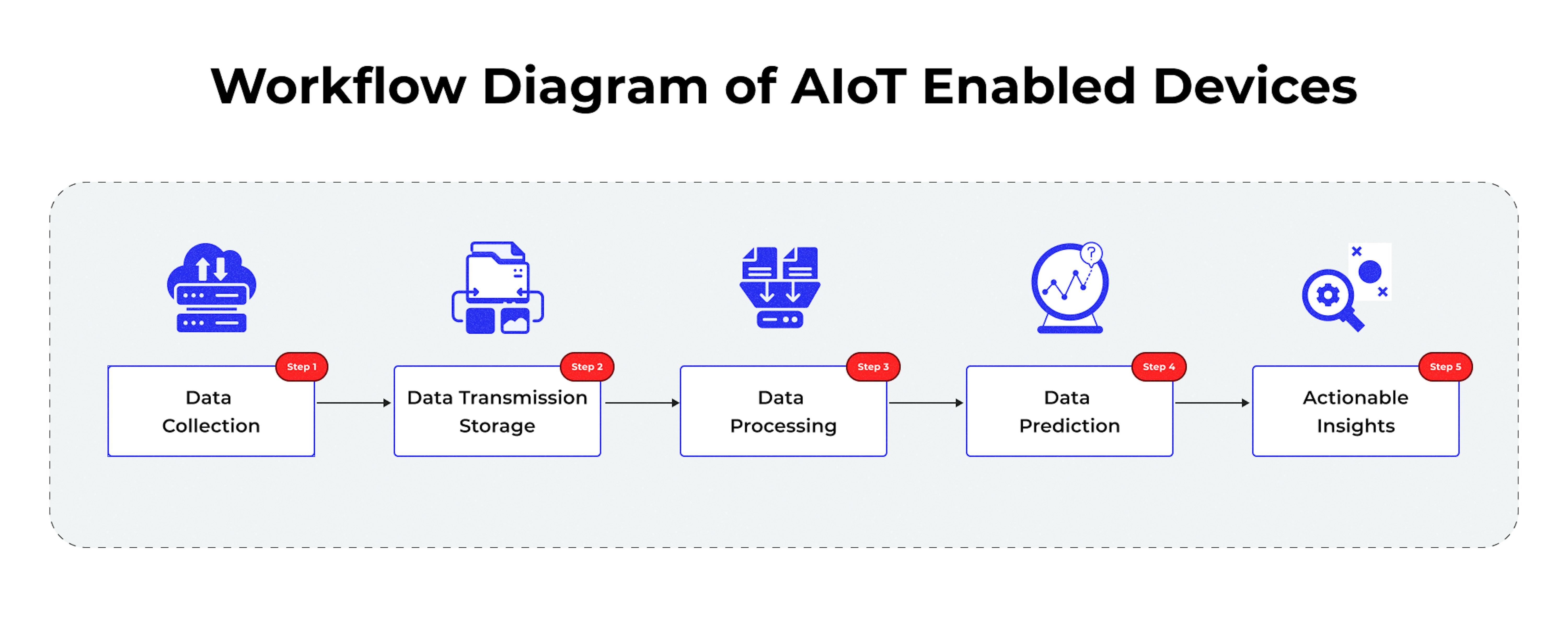
- Data collection
Sensors are an integral part of the IoT ecosystem, and they are used to collect data. When connected to a single device, multiple sensors can be used to manage different types of information. For instance, a device can have multiple cameras, GPS, and accelerometers for data collection. - Data transmission and storage
Due to the massive amount of data collected, it is stored in the cloud. Cloud storage is typically cheaper than on-premise hardware because it eliminates the need for companies to spend a lot of money on storage. It also allows them to analyze and process the data. - Data processing
The cloud allows organizations to process the data collected by sensors. Various steps are involved in the data processing process, such as extracting data, cleansing it, and converting it into a format that is commonly used. - Data prediction
After the data has been processed, machine learning algorithms can help predict future events. For instance, image patterns can be predicted by clustering models, while anomaly detection models can identify possible faults. - Actionable insights
After the predictions have been made, the machines can then take actions based on the generated insights. A well-defined and comprehensive view of the data can help align the business goals and improve the organization's efficiency. Data visualization tools such as Microsoft Power BI and Tableau can help visualize the data and provide actionable reports.
What are the benefits and challenges of AIoT?
| BENEFITS | CHALLENGES |
|---|---|
| AI and Internet of Things can automate and optimize complex tasks, increasing efficiency and productivity. This can result in cost savings and improved operational performance. | AIoT systems rely on the collection and analysis of vast amounts of data, which raises concerns about data privacy and security. There is a risk that sensitive data could be exposed or stolen, leading to potential harm to individuals or organizations. |
| AIoT systems can collect and analyze vast amounts of data in real-time, providing insights and predictions that can inform decision-making and drive business innovation. | With the large number of devices and systems involved in AIoT, interoperability becomes a significant challenge. Ensuring that devices and systems can communicate with each other effectively is essential for AIoT to reach its full potential. |
| AIoT is used to monitor and detect safety issues, such as equipment malfunctions, environmental hazards, or security breaches, and alert relevant personnel in real-time. | AIoT requires significant investment in hardware, software, and infrastructure. The high cost of implementing AIoT systems can be a barrier to entry for smaller organizations. |
| It can be used to personalize products and services for individual consumers based on their preferences, behaviors, and needs. | As with any new technology, there are concerns about the ethical implications of AIoT. These include issues such as bias in decision-making algorithms, potential job displacement due to automation, and the impact on personal privacy. |
| AIoT can be used to monitor and manage resources, such as energy or water, to optimize their usage and reduce waste, contributing to a more sustainable future. | As AIoT is a new and emerging technology, there is a lack of regulation and standards. This can lead to uncertainty for organizations in terms of compliance and liability. |
Market overview
AI market size was valued at $328.43 billion in 2021 and is projected to grow to $1,394 trillion by 2029 at a CAGR of 20.1% in the forecast period.
The increasing adoption of IoT and AI technologies in various industries, such as healthcare, manufacturing, and transportation, is driving the growth of the AIoT market. As the digital transformation of the connected enterprise continues, the use of AIoT is expected to become a standard feature in big data analytics offerings.
According to a report by Research and Market, the global AIoT market will reach $ 83.6 billion by 2027, growing at 39.1% CAGR. This growth is driven by the increasing adoption of AIoT across various industries, such as healthcare, manufacturing, and transportation.
The increasing number of industrial organizations and the demand for automation are some of the factors that are driving the growth of the global AIoT market. As technology evolves, it is expected that businesses will be able to create new ways to improve their operations and provide more personalized services to their consumers.
This will be achieved through the development of software, cloud, and managed services. In the past few years, the rapid emergence of IoT data-as-service offerings has led to their creation and evolution into AI-enabled solutions. Some of the prominent industries that are expected to be impacted by the development of AI-based solutions are those in the energy and utility sectors.
The Asia Pacific region is expected to be the fastest-growing market for AIoT, driven by the increasing adoption of IoT devices and the growth of the manufacturing and healthcare industries in countries such as China, India, and Japan. North America and Europe are also expected to witness significant growth, with the United States and Germany being the largest markets in these regions.
Key players are:
- IBM Corporation
- Microsoft Corporation
- CISCO System Inc.
- Amazon Web Services AWS
- Google, LLC
Ethical and regulatory considerations for AIoT development and implementation
As the integration of AI and the Internet of Things continues to gain momentum, it is essential to consider the ethical and regulatory implications of AIoT development and implementation. Here are some key considerations:
- Data privacy and security
AIoT devices collect a vast amount of data, including personal and sensitive information. It is crucial to ensure that this data is adequately protected from unauthorized access or theft. Developers and manufacturers should implement robust security protocols to safeguard against data breaches. - Transparency and accountability
As AIoT devices make decisions based on data, it is essential to ensure that their decisions are transparent and accountable. Developers and manufacturers should provide clear explanations of how their devices make decisions and take responsibility for any harmful outcomes resulting from their use. - Bias and fairness
AI algorithms can perpetuate bias and discrimination if trained on biased data sets. Developers should be mindful of this and ensure that their algorithms are trained on diverse data sets that are representative of the people they are meant to serve. - Regulation and compliance
As AIoT devices become more prevalent, governments and regulatory bodies will need to develop and enforce regulations to ensure that they are used ethically and responsibly. Developers and manufacturers should stay up to date with regulatory developments and comply with all applicable laws and regulations. - Human oversight and control
While AIoT devices can make decisions and automate processes, humans should have ultimate control over them. Developers and manufacturers should ensure that their devices can be overridden or shut down if necessary. - Impact of AIoT on society and the economy
AIoT has a tremendous ability to enhance the efficiency of organizations by allowing them to make smart decisions. This will enable them to create new business opportunities and transform their operations. - Improved efficiency and productivity
AIoT devices can collect and analyze large amounts of data in real time, which can be used to optimize processes and increase efficiency. This can lead to cost savings, improved product quality, and faster response times. - Increased automation
AIoT devices can automate many tasks, which can reduce the need for human labor and increase productivity. This can lead to job losses in some industries, but it can also create new job opportunities in areas such as AI development and maintenance. - Enhanced safety and security
AIoT devices can be used to monitor and detect potential safety hazards or security breaches, such as fire or theft. They can also be used to improve public safety by detecting and responding to natural disasters or accidents. - Personalized experiences
AIoT devices can collect and analyze data about individual users, which can provide personalized experiences and recommendations. This can improve customer satisfaction and drive sales. - New business models
AIoT can enable new business models, such as subscription-based services or pay-per-use models. This can create new revenue streams and disrupt traditional business models. For example, companies can offer autonomous vehicle services on a subscription or pay-per-use basis. Customers can use an app to request a vehicle, and the AIoT system will dispatch the nearest available vehicle to their location. This model disrupts traditional car ownership models and provides customers with a more flexible and cost-effective transportation option.
What is the future of AIoT?
The combination of IoT and AI provides a tremendous opportunity to enhance the efficiency of organizations by allowing them to make smart decisions. This will allow them to create new business opportunities and transform their operations. Let’s look at emerging technologies and trends in AIoT.
Edge computing
Edge computing is an emerging technology that involves processing data closer to the source of the data rather than sending it to a centralized cloud server. This technology can help reduce latency, improve efficiency, and reduce network congestion.
Swarm intelligence
Swarm Intelligence refers to the collective behavior of decentralized, self-organized systems. This technology is inspired by the behavior of natural swarms, such as bees or ants, and can be used to optimize the operation of IoT devices.
5G technology
5G technology promises faster network speeds, higher bandwidth, and lower latency. This technology will enable deploying more IoT devices, which will generate more data and require more processing power.
Computer vision
Computer vision is a field of AI that focuses on enabling computers to interpret and understand visual data from the physical world. It can be used in AIoT applications to analyze video streams from cameras, identify objects, and detect anomalies.
Natural language processing
Natural language processing (NLP) is a field of AI that focuses on enabling computers to understand human language. NLP can be used in AIoT applications to enable voice control of IoT devices or to analyze text-based data generated by IoT sensors.
Top applications of AIoT in different sectors
As technology continues to evolve, we can see innovative applications of AIoT, bringing significant benefits to businesses and society as a whole. Let’s take a look at some examples of an application of artificial intelligence in the internet of things in action in different sectors:
Healthcare monitoring
Healthcare monitoring is an application of AIoT that has gained popularity in recent years, particularly in light of the COVID-19 pandemic. With the help of IoT sensors and AI algorithms, healthcare providers can monitor patients remotely and detect potential health problems early on. This can help reduce the burden on healthcare systems and improve patient outcomes.
A study conducted by Nature Medicine revealed that an AI system was able to detect lung cancer cases in more patients than six radiologists. The system, which was trained on 42,000 scans, also had a lower number of false positives.
According to a study conducted by the JAMA Internal Medicine journal, about 97,5% of lung cancer cases are incorrectly diagnosed as false positives. With the help of AI, lung cancer cases can be accurately diagnosed.
Even though AIoT systems can perform well when it comes to detecting skin cancer, breast cancer, and other skin diseases, they have far-reaching applications.
In recent studies, AI systems have been able to identify genetic conditions affecting children and adults, as well as those that cause cognitive decline, in infants and predict the likelihood of getting Alzheimer's.
Smart homes
Smart homes are one of the most popular applications of AIoT. With the help of IoT sensors and AI algorithms, homeowners can control and monitor various aspects of their homes, such as lighting, temperature, and security systems. AIoT-enabled smart home devices can learn and adapt to the homeowner's preferences over time, making their lives more comfortable and convenient.
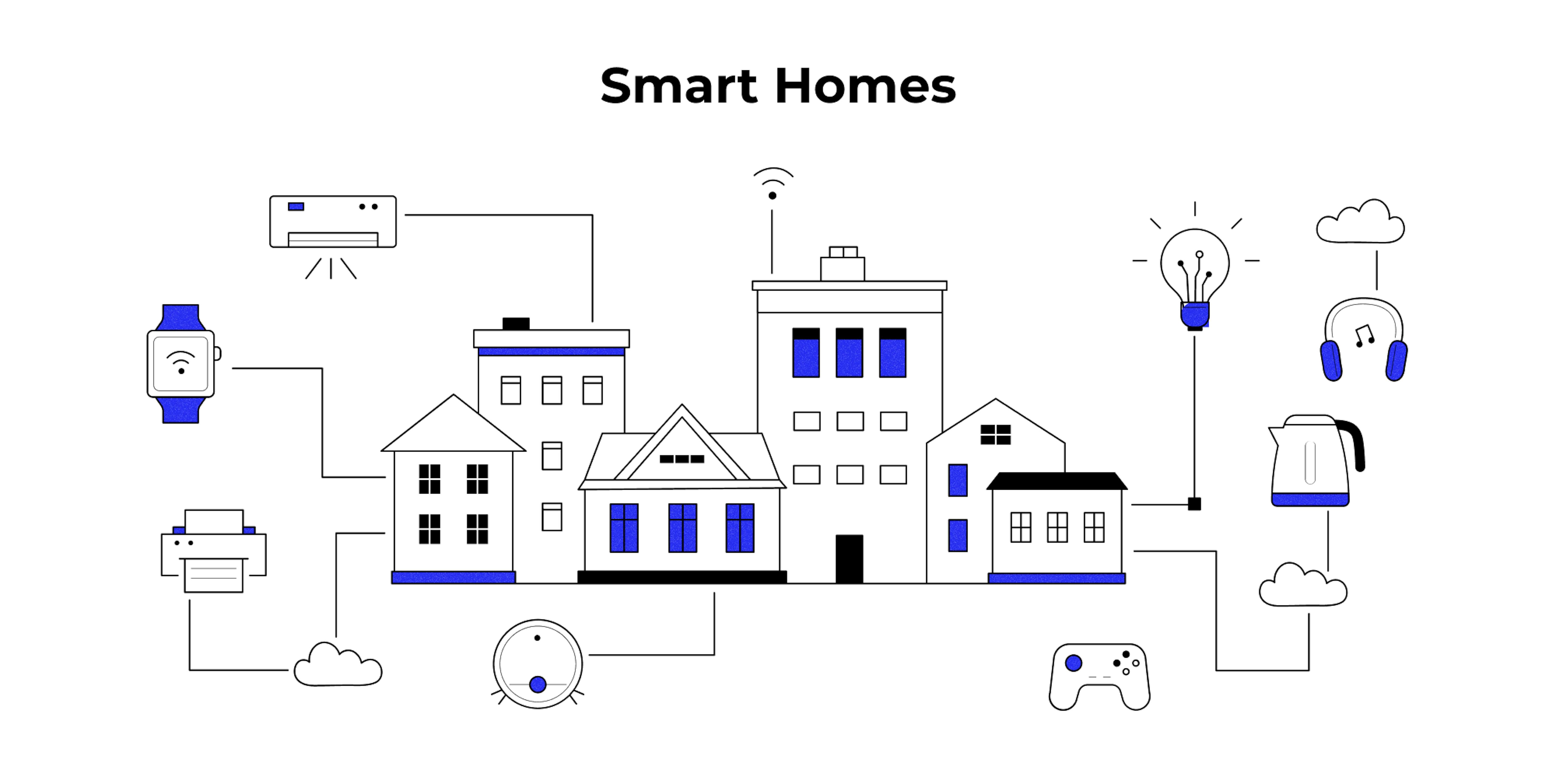
Office buildings can also benefit from the IoT and AI by implementing sensor technologies that can help manage their energy usage. It can be used to monitor the movement of people in their surroundings, which is very important for security management. This can be done by comparing the images and data collected by the building's sensors to determine which areas can be accessed. This is useful for security management. A company based in Beijing known as the Terminus Group is advocating for the use of smart buildings.
Autonomous vehicles
Autonomous vehicles are another popular application of AIoT. With the help of AI algorithms and IoT sensors, autonomous vehicles can navigate roads and make decisions in real-time. AIoT can also be used to monitor the condition of the vehicle and predict potential failures, enabling timely interventions to ensure the safety of passengers.
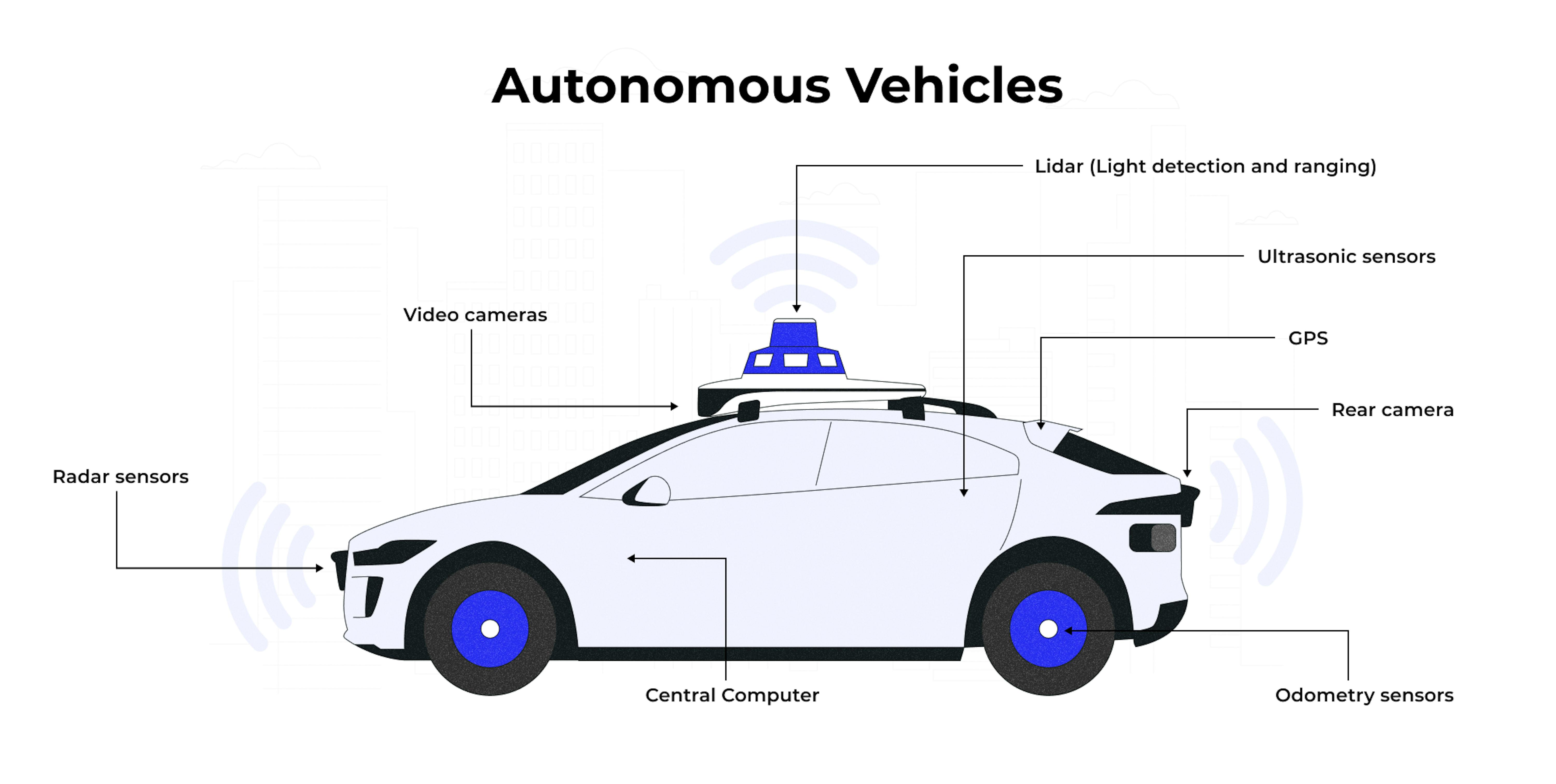
Tesla's self-driving vehicles are an example of how AI and IoT can work together. Through the company's technology, its cars can predict the actions of pedestrians in different situations.
Manufacturing
Predictive maintenance is an application of AIoT that has gained significant popularity in the manufacturing sector. By analyzing data from IoT sensors installed on machines and equipment, AI algorithms can predict potential equipment failures and schedule maintenance activities to prevent unplanned downtime. This can help manufacturers save significant costs and improve the efficiency of their production processes. According to the PwC report, predictive maintenance can help improve equipment uptime by around 9% and reduce costs by 12%.
Supply chain optimization
AIoT can also be used to optimize supply chain operations by providing real-time visibility into the movement of goods and materials. By collecting data from IoT sensors installed on vehicles and warehouses, AI algorithms can optimize routes, reduce transportation costs, and improve inventory management.
Shopping and retail
Various sensors and cameras can be used to collect data about customers' journeys to the checkout line, allowing managers to identify areas of their store where they can improve the experience. In addition, this data can help predict the number of staff members needed in the store.
In an effort to address some of the common issues associated with shopping in a physical store, IBM has partnered with fashion brand Vero Moda to introduce smart mirrors that allow people to get advice on which items to buy. According to the company, the mirrors function similarly to virtual fitting rooms by enabling people to ask questions and get feedback on their chosen products.
According to IBM, the company's mirrors could help brick-and-mortar retailers reduce the number of items they offer at deep discounts by providing them with valuable data about their customers. However, it's not clear if this feature will be widely adopted or if it will remain a niche product.
To wrap up
The adoption of AIoT is expected to proliferate in the coming years, driven by the increasing demand for automation and digitalization across various industries.
The combination of IoT and AI allows businesses to make better decisions by analyzing and improving the data collected by their devices. This is also beneficial for the development of new business models and solutions. Ultimately, this technology will allow businesses to transform their operations and create new opportunities.
Are you interested in implementing AIoT for your project? Sign up for free consultation with us. We will provide all possibilities and solutions to help you move from idea to implementation.

